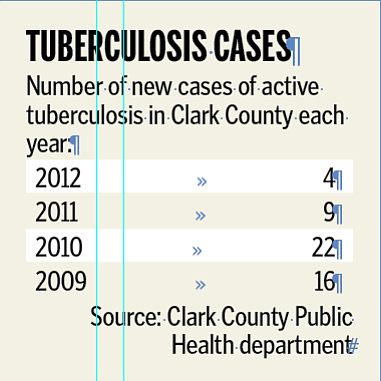Physicians always stress the importance of completing antibiotic prescriptions. Heeding that advice is particularly important for people with tuberculosis.
So important that Clark County Public Health staff monitor residents with the disease, which includes actually watching them swallow an array of pills to treat TB.
Tuberculosis is a contagious disease caused by a bacteria, mycobacterium tuberculosis, that attacks the lungs or other parts of the body, such as the kidney, spine or brain, said Marni Storey, deputy director of Clark County Public Health.
TB is spread through the air from one person to another. However, not everyone with TB gets sick.




